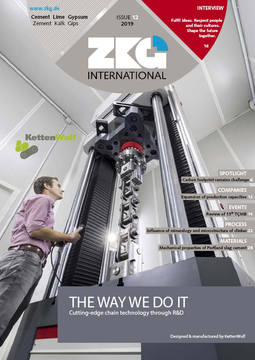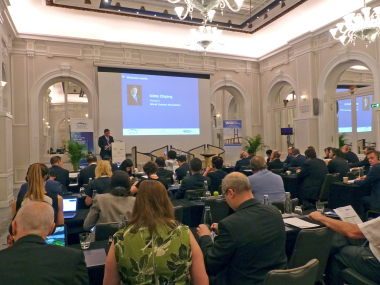Industry response to sustainability challenges
Despite the spate of recent positive adverts, progress on industry-wide carbon abatement has stalled since 2012. According to GNR, after dropping 18 % between 1990 and 2012, net CO2 emissions/ton cementitious have remained flat.
In 2018, the WCA held the Global Climate Change Forum, which highlighted initiatives that will make an impact on carbon emissions reductions in the long term including: optimising the use of cement in construction, exploring the potential of innovative technologies, and supporting the transition to a low-carbon built environment.
In the short term, there is still plenty of room to improve industry performance using known levers such as energy efficiency and alternative fuels (AF). The gap between average consumption per ton of clinker and best practice is 50 % for power and 15 % for fuel. Since 2012 the portion of thermal energy from AF has increased from 14 % to 18 % but this can be increased much further. The penetration of waste heat recovery (WHR) outside China is less than 20 %.
WCA’s climate change roadmap provides practical guidance to help members analyse immediate steps such as energy efficiency, WHR and AF, as well as looking at longer term measures. To help with implementation, WCA’s Member Forums share best practice on specific topics, for example, advanced milling technologies at a forum in Vietnam in March 2020.
Another form of knowledge sharing is plant audits, which highlight the gap between members’ operations and best practice, as well as the options to close this gap. The focus of these audits is on energy efficiency and maintenance. Many steps can be taken with little capital investment to improve stability and efficiency of existing lines. Sometimes capital is needed, for example WHR projects, which are viable in many cases even without the incentive of a carbon price.
Of course, climate change is not the only environmental crisis we face. The industry can also make a positive impact on biodiversity, especially in developed countries, where reduced biodiversity from many years of land degradation and habitat loss can be mitigated during quarry reclamation. One of our members, Asia Cement, is hosting a Member Forum at their Hualien quarry, which will showcase what can be done to tackle biodiversity loss and promote habitat restoration.
The outlook for cement in 2020 is positive in most of the world. I hope to see a commensurate step forward in our efforts to make the industry more sustainable.
Ian Riley
CEO World Cement Association




